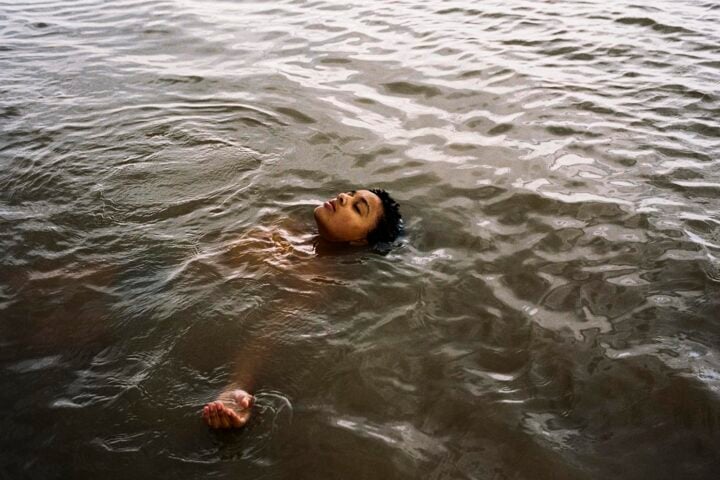Since 2016’s Fences, Denzel Washington has served as the cinematic midwife for August Wilson’s Century Cycle, a sequence of 10 plays depicting African American life in Pittsburgh during each decade of the 1900s. Following that first foray, which Washington starred in and directed, came George C. Wolfe’s Ma Rainey’s Black Bottom, and now, with Malcolm Washington at the helm, The Piano Lesson. One of Wilson’s most acclaimed and popular works, the play is set in the late 1930s and introduces a strain of magic realism that will run deep throughout the rest of Wilson’s plays in the cycle.
The Piano Lesson’s central conflict converges on the Charles family’s ancestral inheritance: a piano once traded for two of their enslaved forbears, and later absconded with by a descendant. Berniece (Danielle Deadwyler), who lives with her uncle, Doaker (Samuel L. Jackson), and daughter, Maretha (Skylar Aleece Smith), closed the lid on the piano after her mother died and fears playing it, lest she wake the ghosts of the family members whose blood was fused into its wood. But her brother, Boy Willie (John David Washington), has another idea: sell the piano, split the money with Berniece, and use his half to buy a plot of land from the Sutter family in Mississippi—the same land that his family was forced to work before they were freed.
Through the familiar situation of two siblings squabbling over a shared heirloom, Wilson’s play explores the burden of the past, and in particular the legacy of slavery and incarceration. The piano, as the metaphorically loaded center of the piece, represents different things to different characters. For Berniece, the souls of her ancestors are contained within it, while Boy Willie sees an opportunity to buy his freedom and, in a material way, rectify past injustice.
When Denzel Washington kicked off his adaptive enterprise with Fences, he showed a religious devotion to Wilson, with the late playwright the only credited writer on the film. While Ma Rainey’s Black Bottom and, now, The Piano Lesson also stick closely to their source texts, each has its own adapted screenplay, reflecting a different approach to stage-to-screen translation—one that, at times, strains for visual dynamism at the expense of the plays’ natural rhythms.

In that regard, The Piano Lesson’s supernatural elements present the greatest challenge and opportunity for the filmmakers. With a full arsenal of special effects, they give into the temptation to go full William Castle, literalizing the metaphorical ghosts of a play that’s so rich in theme, character, and dialogue with standard haunted-house imagery.
More problematic, though, is the editing scheme, which tries to jazz up Wilson’s talky, one-room drama by stringing together wildly disparate angles and isolated close-ups. Expanding the setting and creating interstitial segments to fill in off-stage business are two common tools for creating visual interest when adapting a play—and both are employed here. But simply making busy work for the camera crew when shooting straightforward dialogue serves only as an incongruous distraction from the work’s chief pleasures.
Among those pleasures are Wilson’s idiomatically stylized dialogue and the performers who ably embody it. While Jackson isn’t the most natural fit for Doaker, as the actor is older and more explosive than the character as conceived by Wilson, there’s a poignancy to seeing the elder statesman play opposite John David Washington’s alternately blithe and resolute Boy Willie, the role that Jackson originated when the play premiered in 1987 at the Yale Repertory Theatre. Deadwyler also makes a strong impression, particularly when we can see Berniece trying to mask one emotion with another, her face revealing love beneath annoyance and resentment.
These performances alone make this adaptation absorbing and elevating, even if the translation to a new medium isn’t seamless. By way of contrast, Alonso Ruizpalacios’s La Cocina, also based on a play, displays the directorial brio of an early Paul Thomas Anderson film, the camera lurching around over every inch of its confined kitchen setting in pompously virtuosic long takes. The sheer brilliance of the choreography, the dance between actors and camera, is of a particular character inherent to cinema. Falling somewhere on the spectrum between this transformative approach to adaptation and the more plainly dutiful one represented by Denzel Washington’s Fences, this film feels at times like the earnest result of a group of artists paying tribute to a great playwright rather than a fully realized work of its own.
Since 2001, we've brought you uncompromising, candid takes on the world of film, music, television, video games, theater, and more. Independently owned and operated publications like Slant have been hit hard in recent years, but we’re committed to keeping our content free and accessible—meaning no paywalls or fees.
If you like what we do, please consider subscribing to our Patreon or making a donation.





